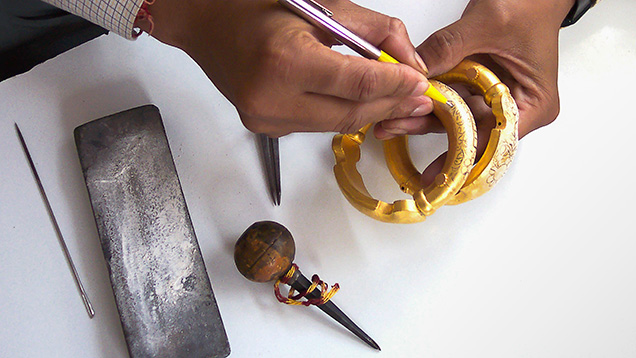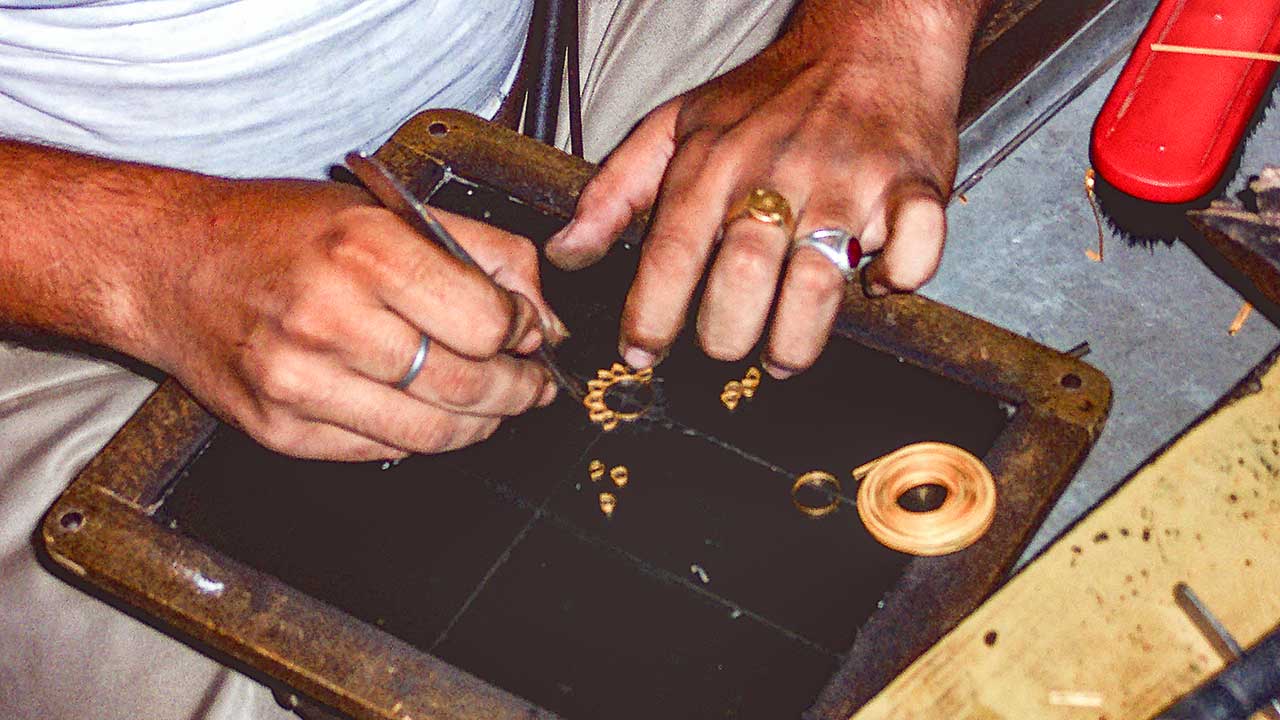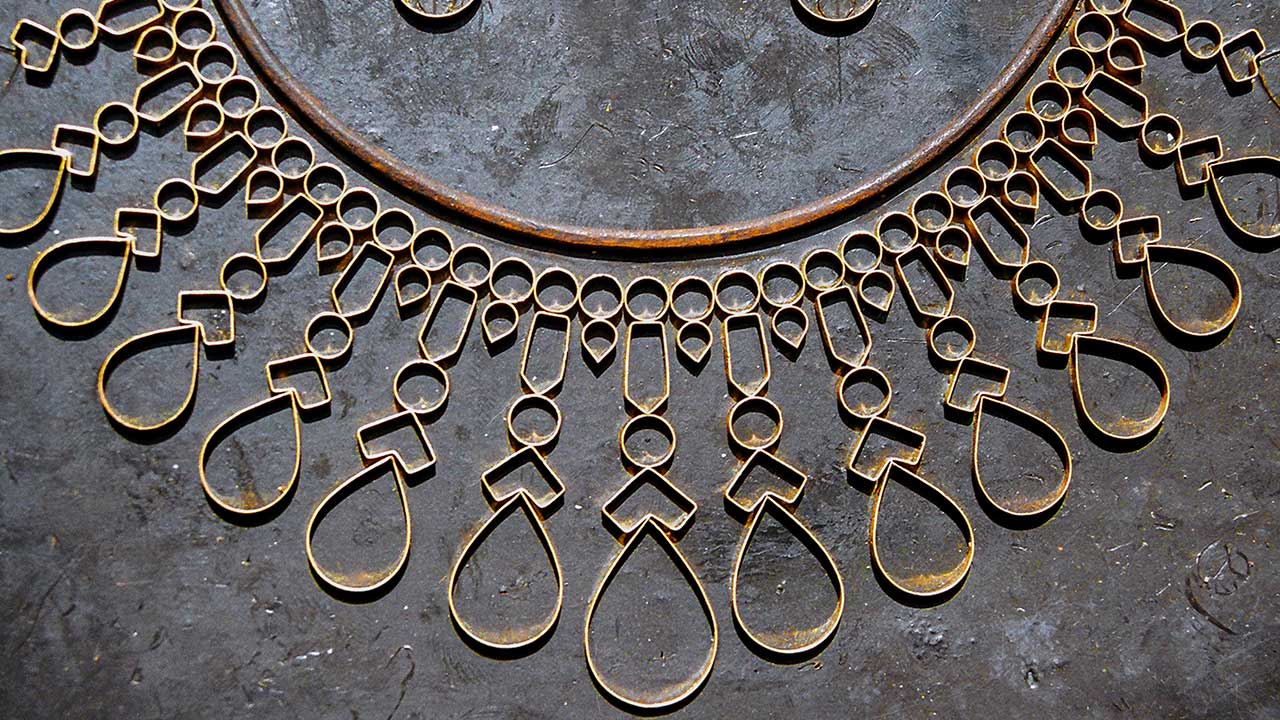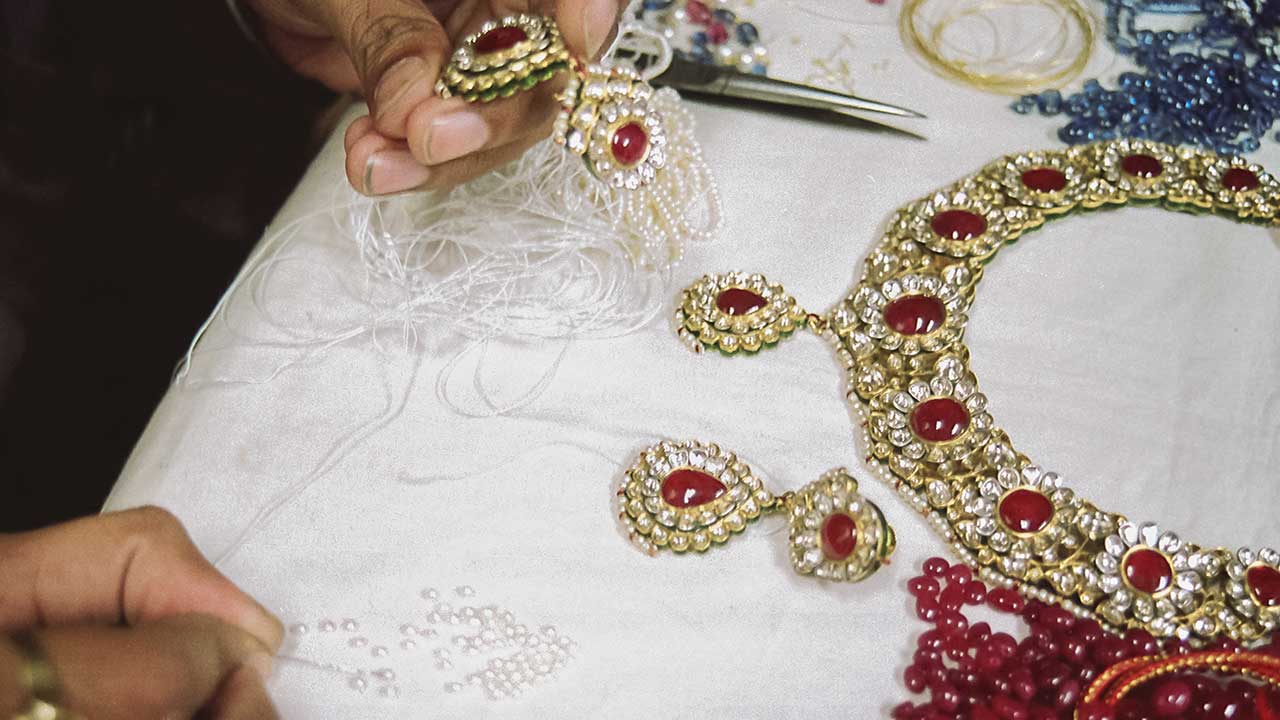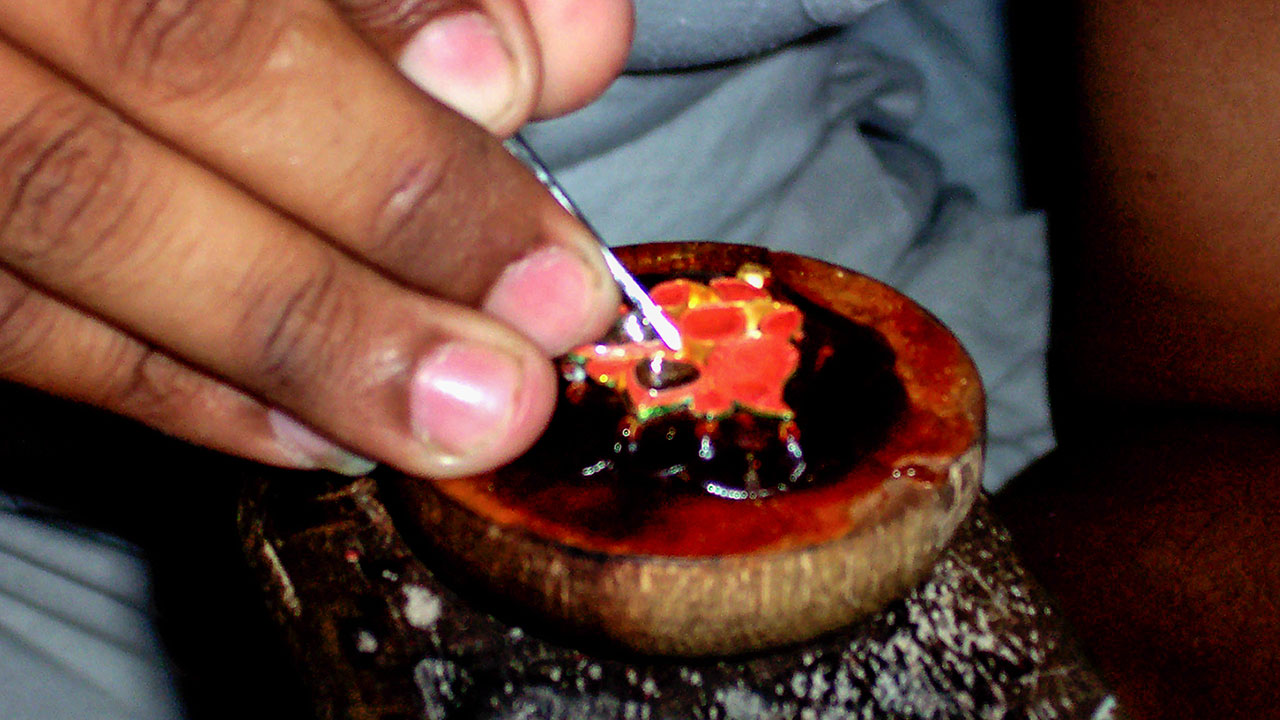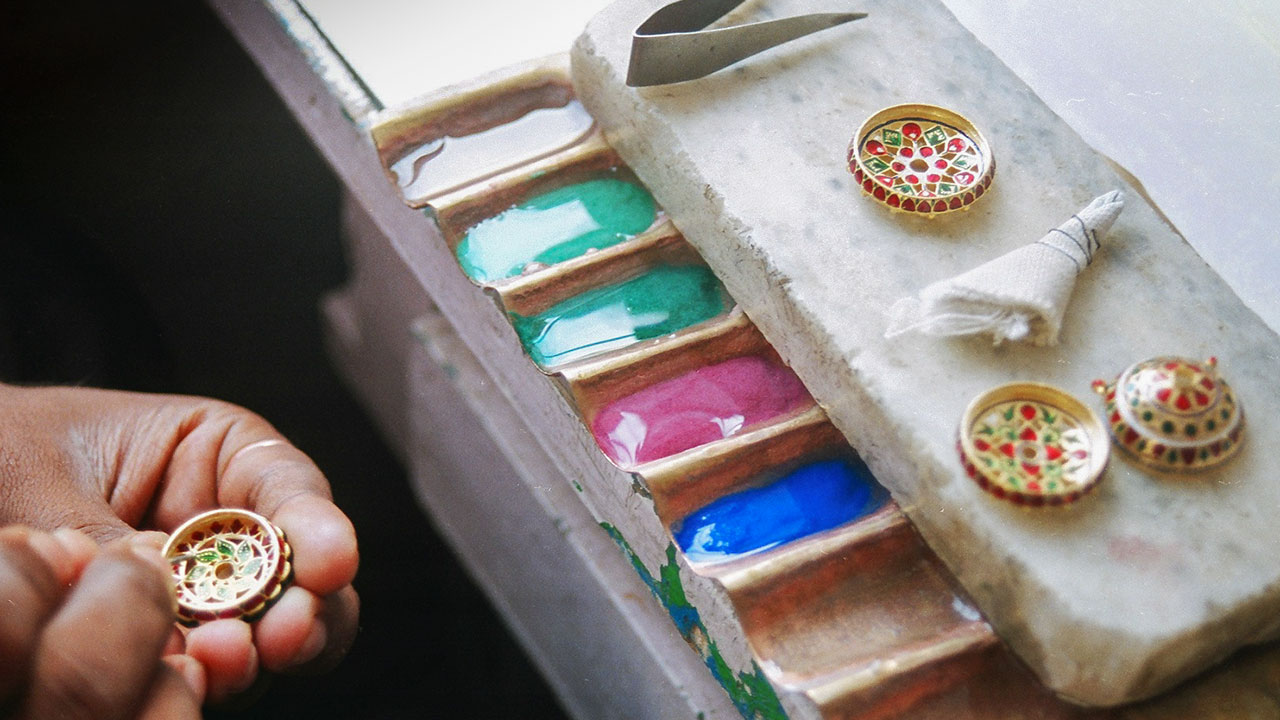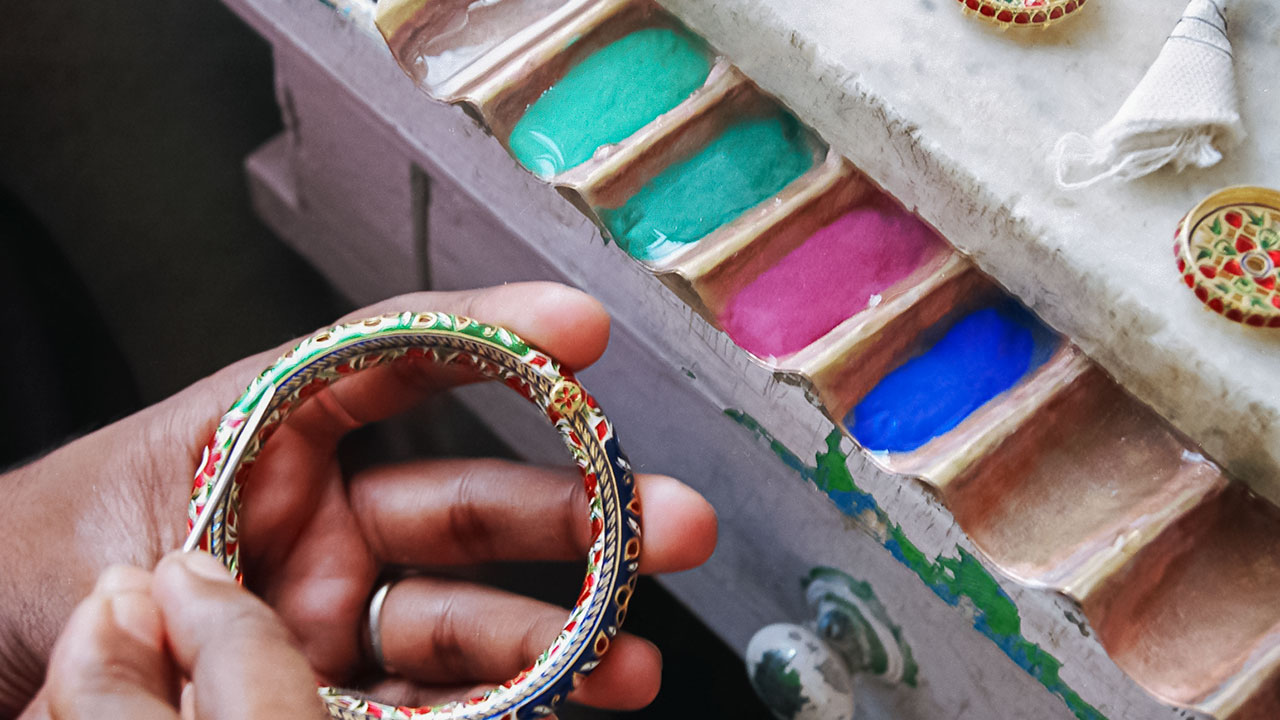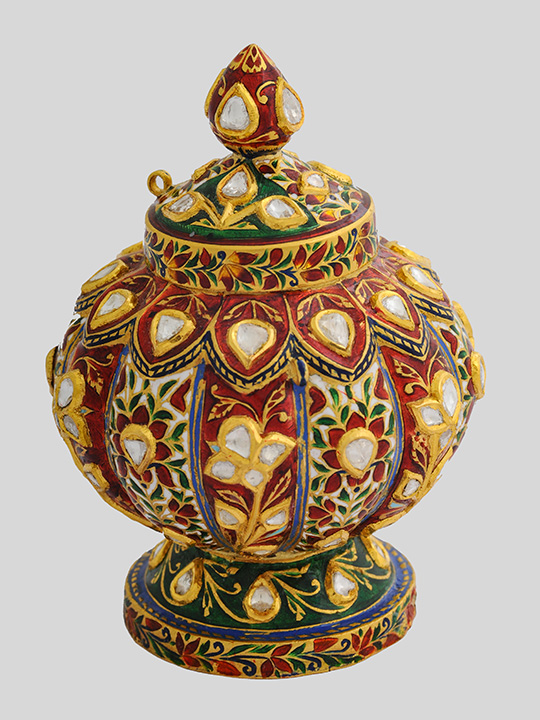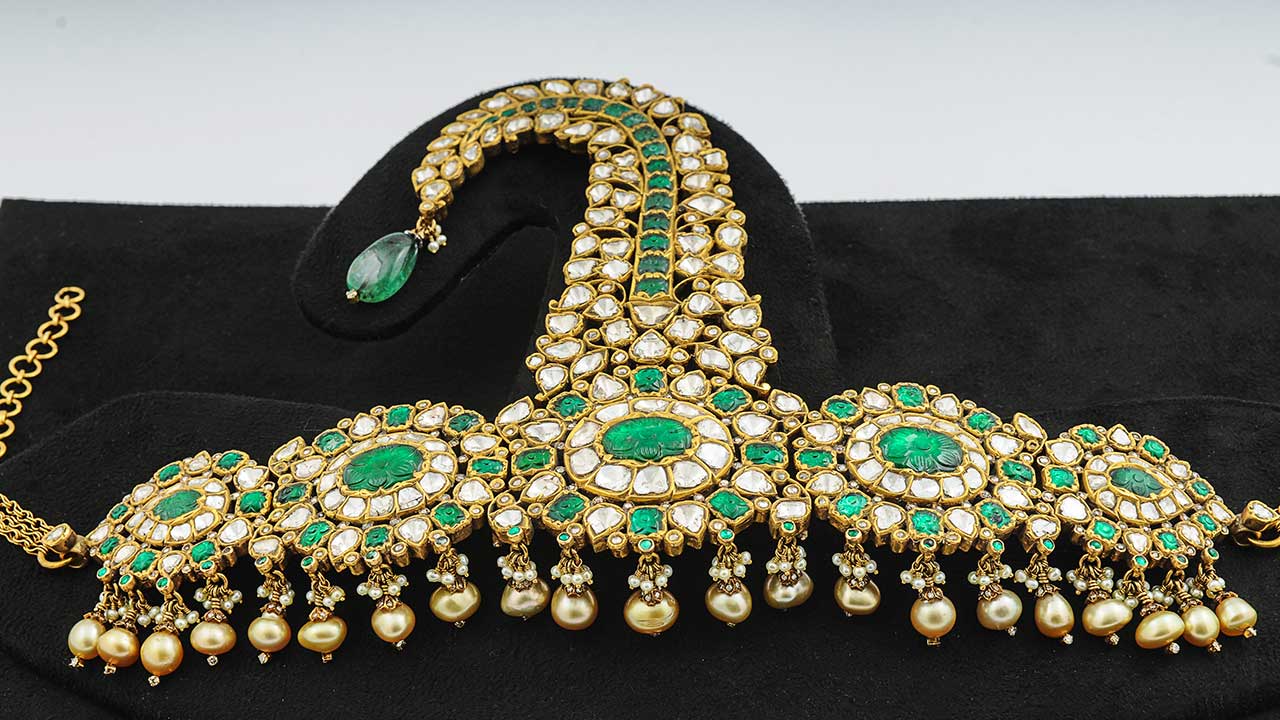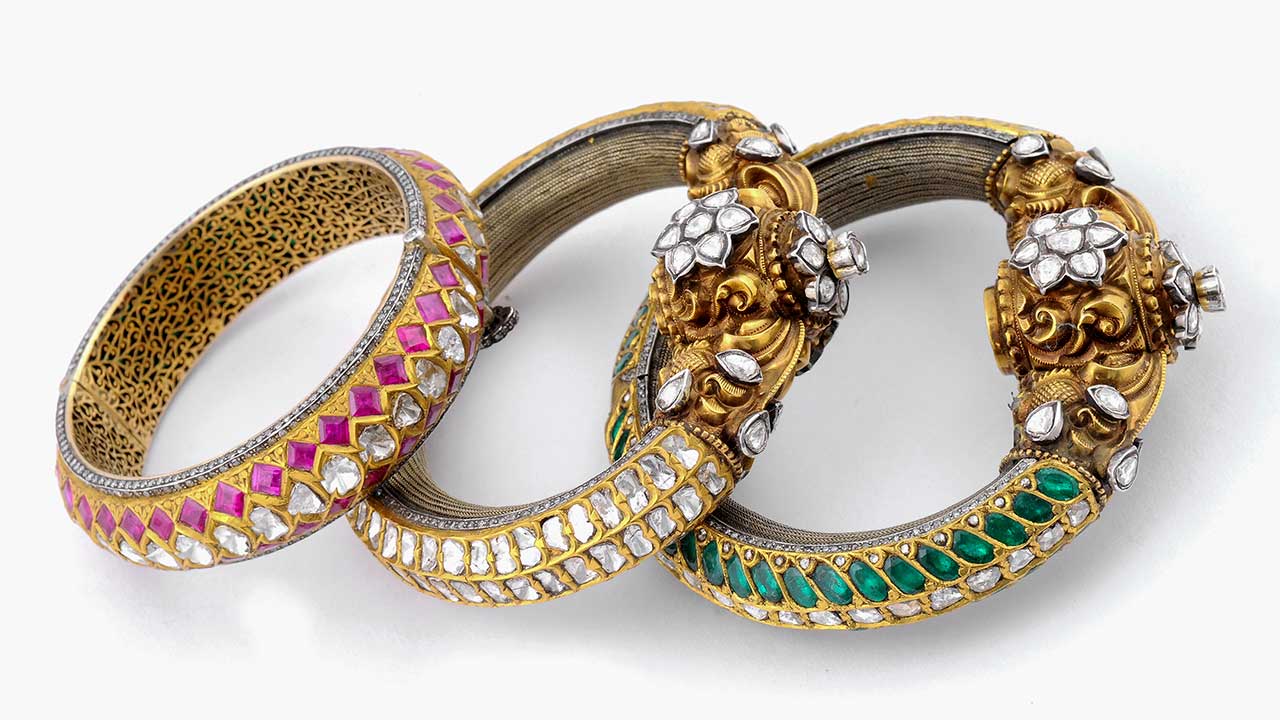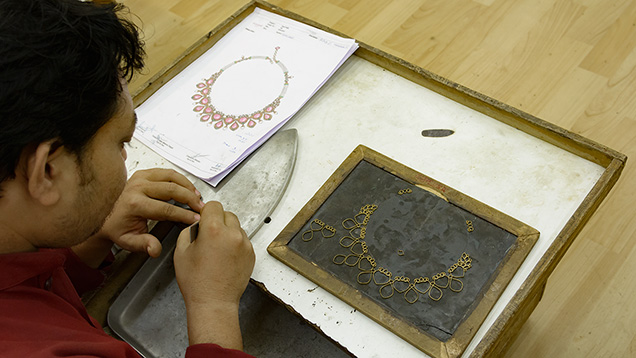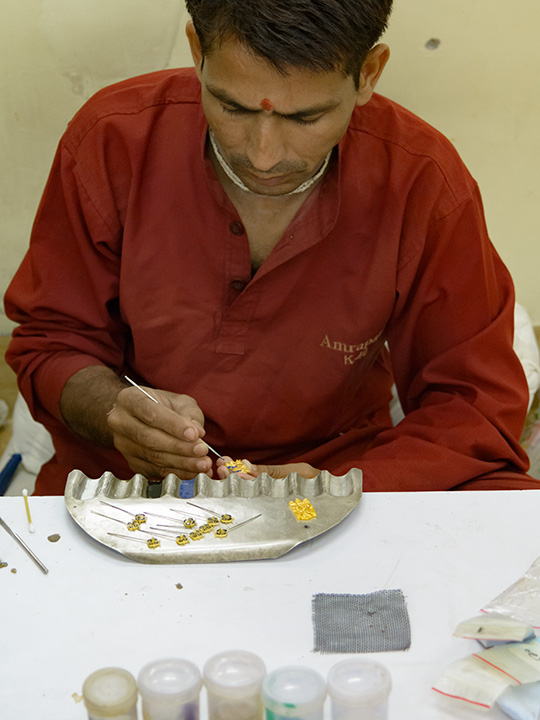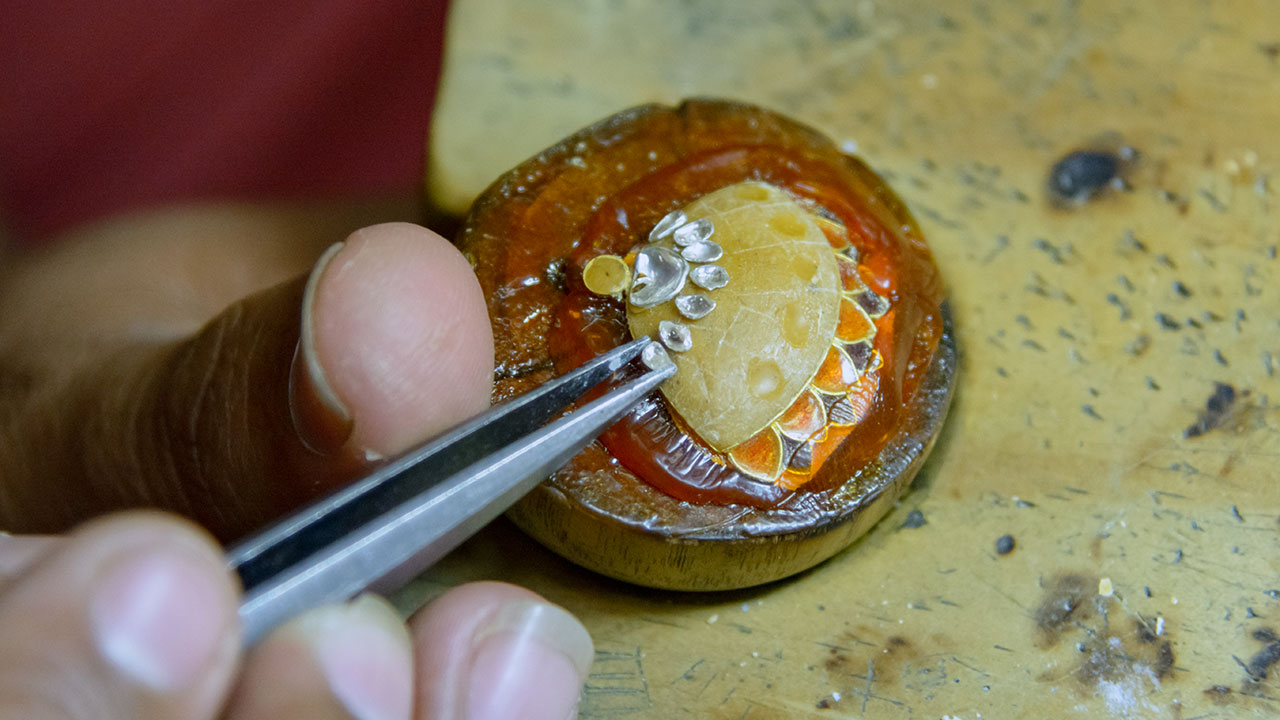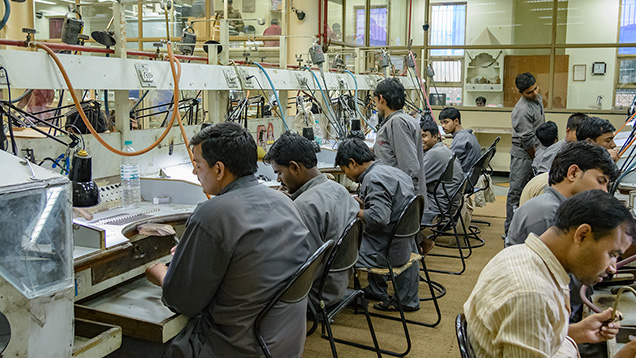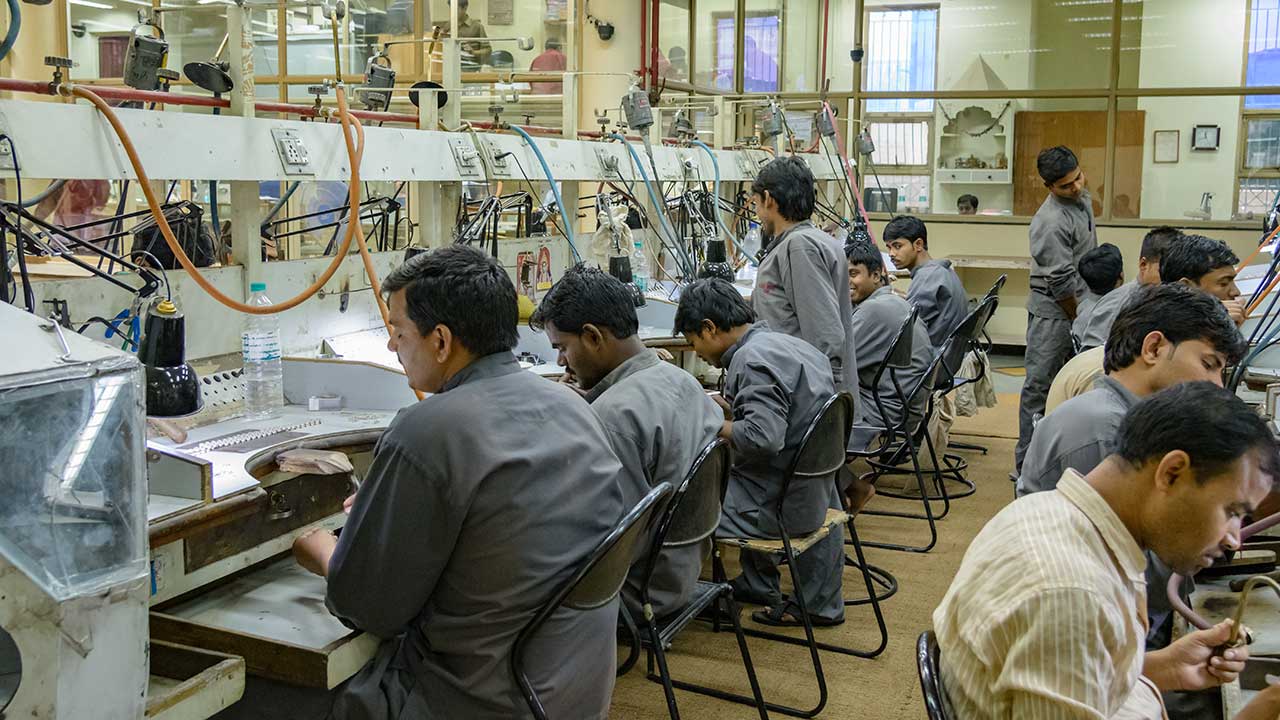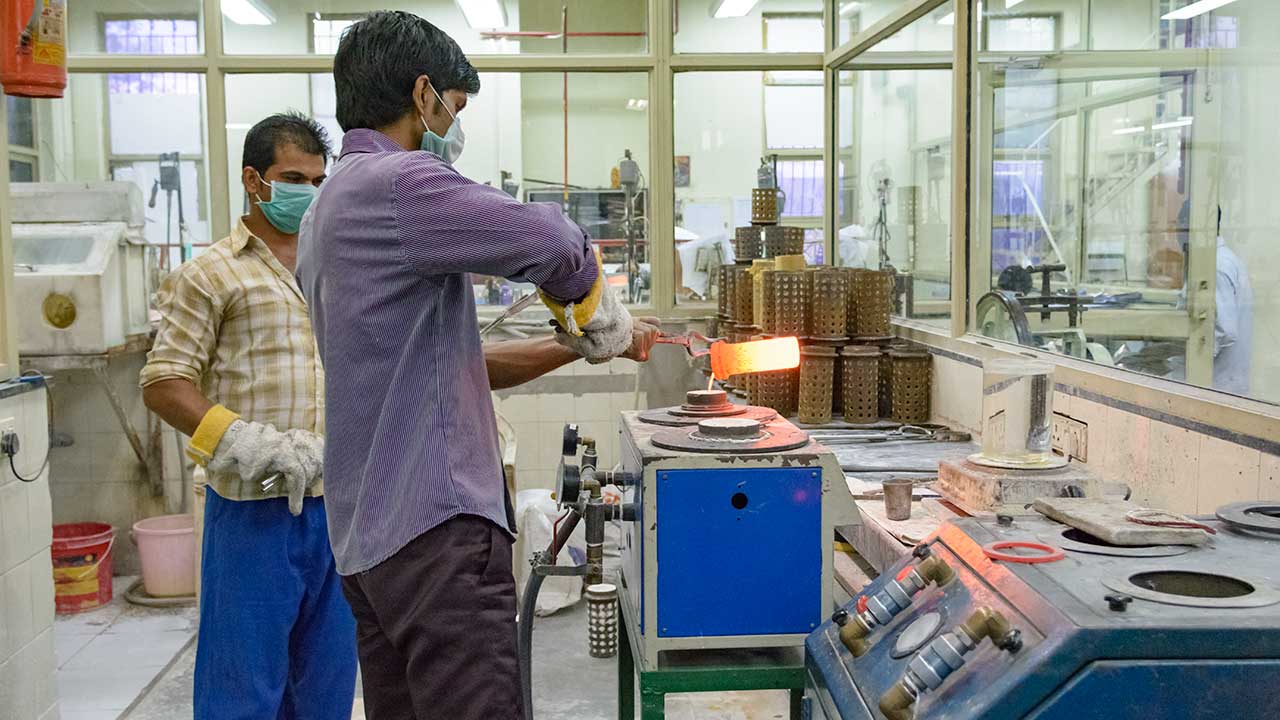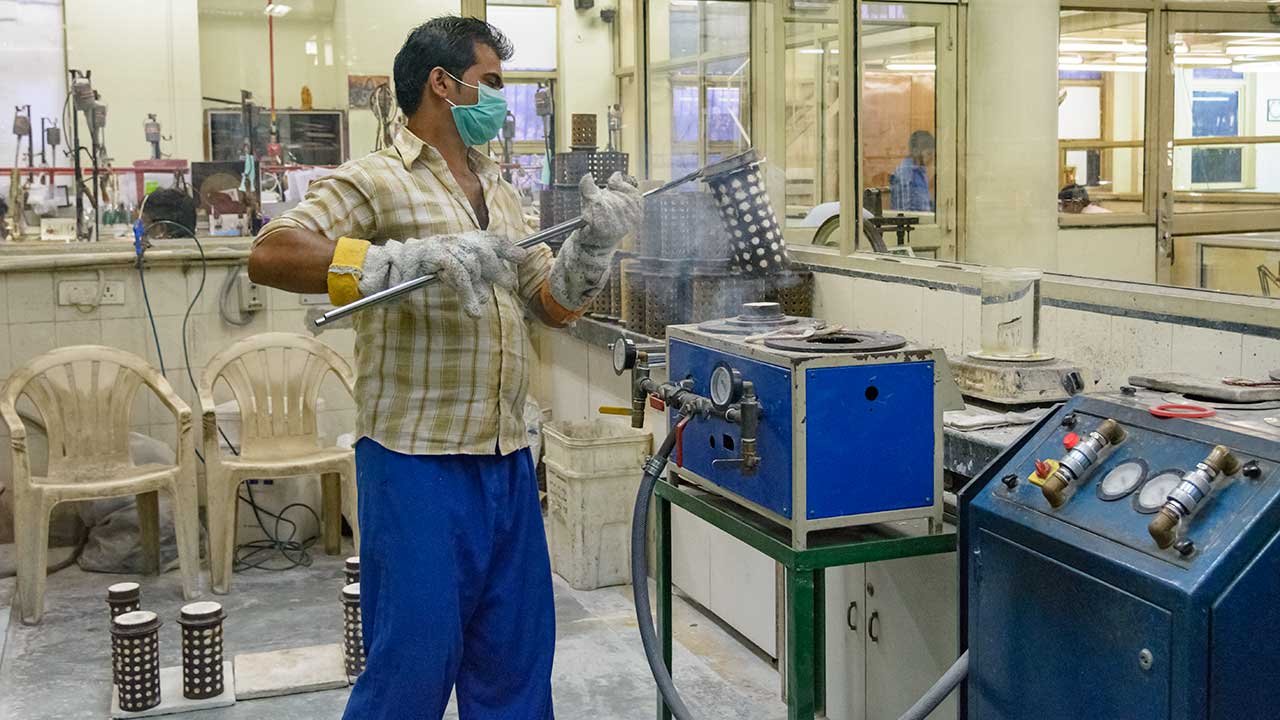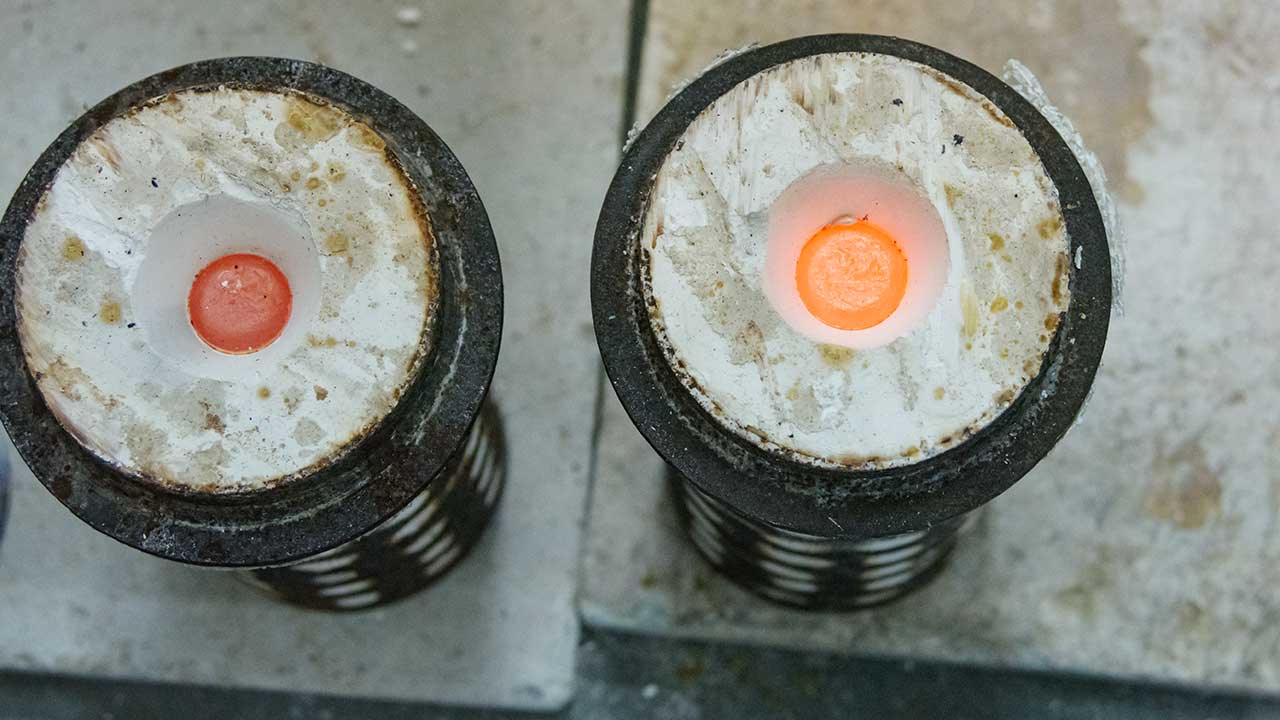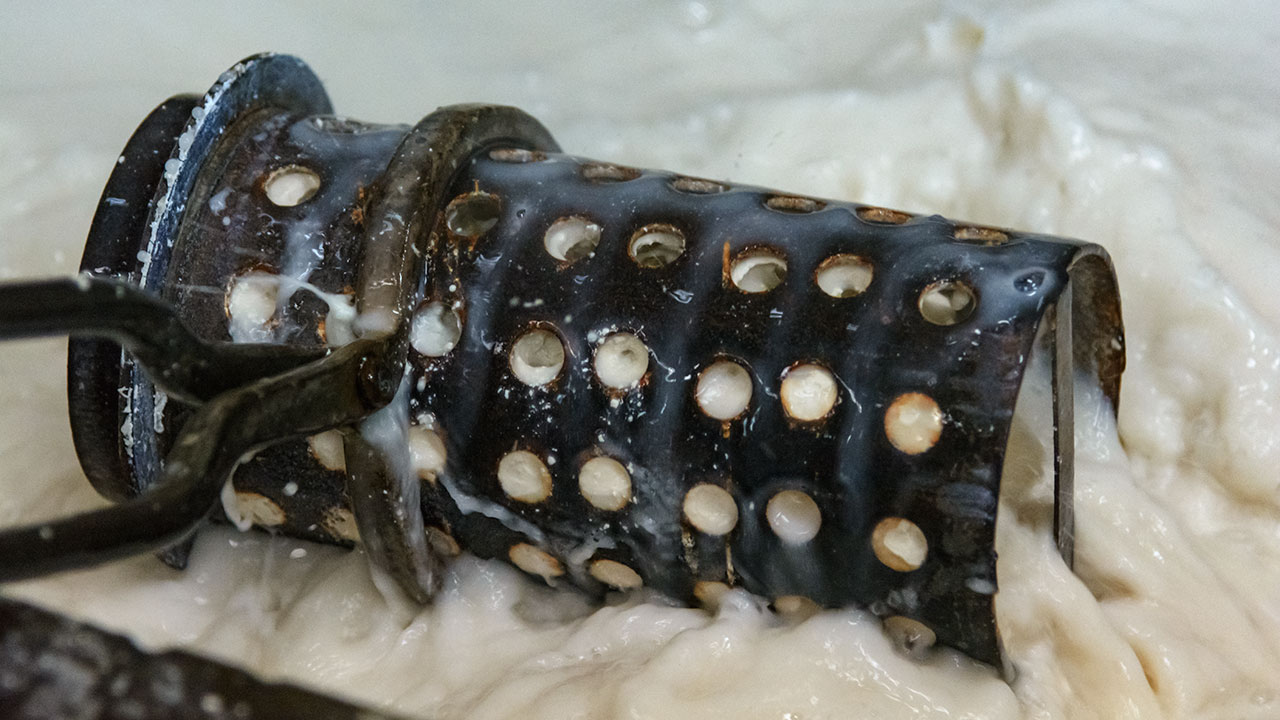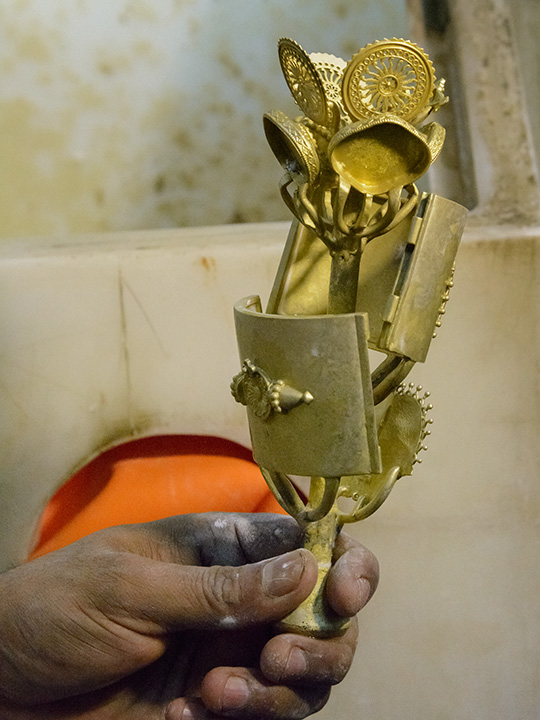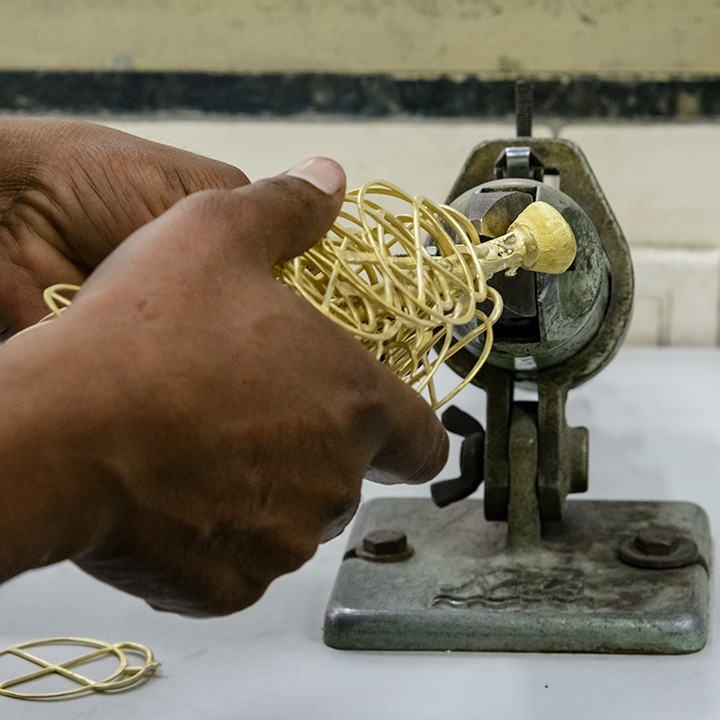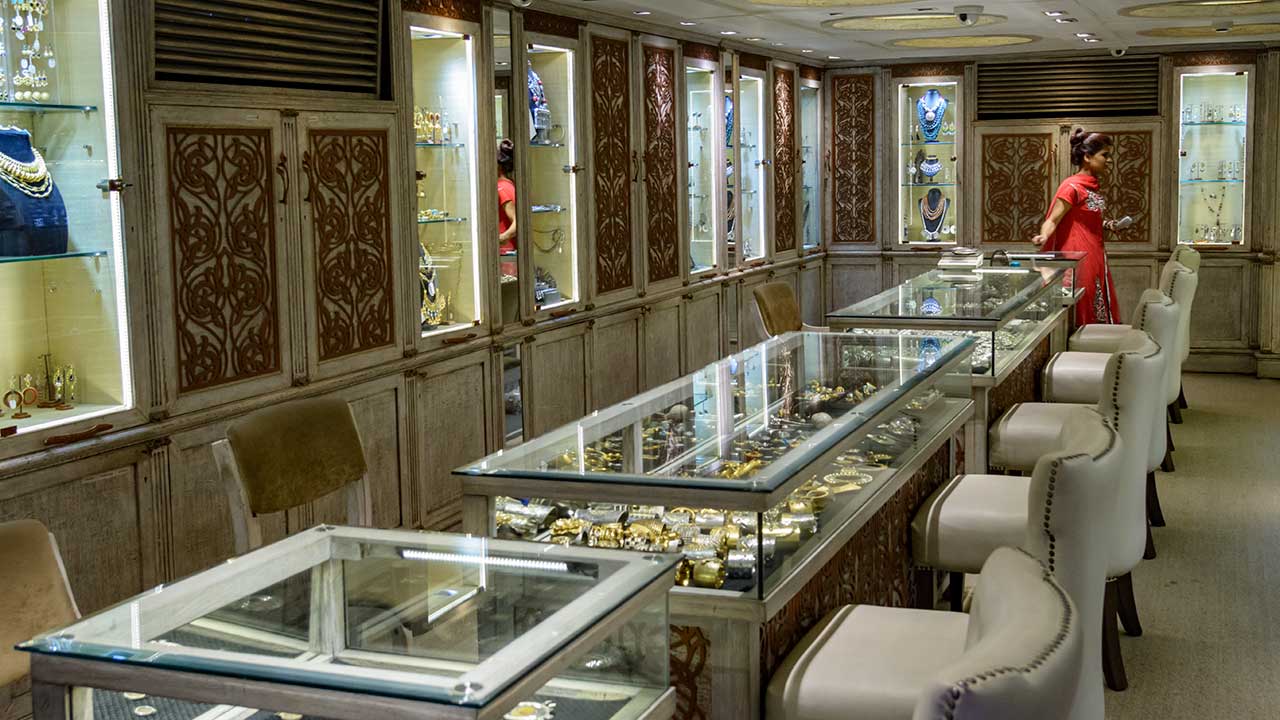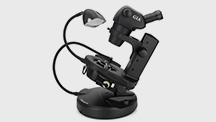Jewelers to the Maharajas of Jaipur and Modern-Day Moguls
, , , , , andMarch 18, 2016
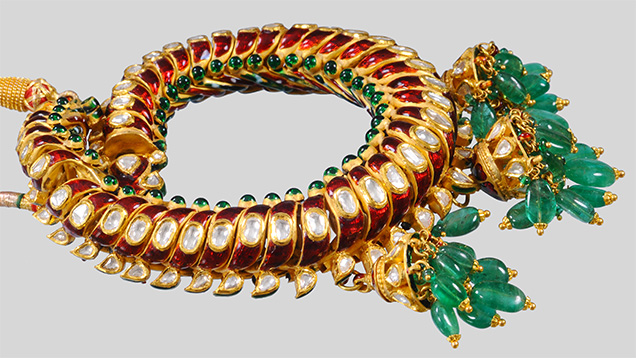
Jaipur, India, in the state of Rajasthan, is home to families of jewelers who have been creating masterpieces of wearable art since the early 1700s. When Maharaja Sawai Jai Singh II, the Raja of Amer, founded the city, these families were invited to settle there and create opulent jewelry for the royals of Rajasthan.
So what are some traditional styles of Rajasthan jewelry?
In Kundan jewelry the gems are set in a metal foil, typically thin 24K gold, worked around the edges of the stones to secure them. Kundan meena consists of 24K thin foil–set stones combined with the beautiful Rajasthan style of enamel, usually on 22K to 24K gold jewelry.
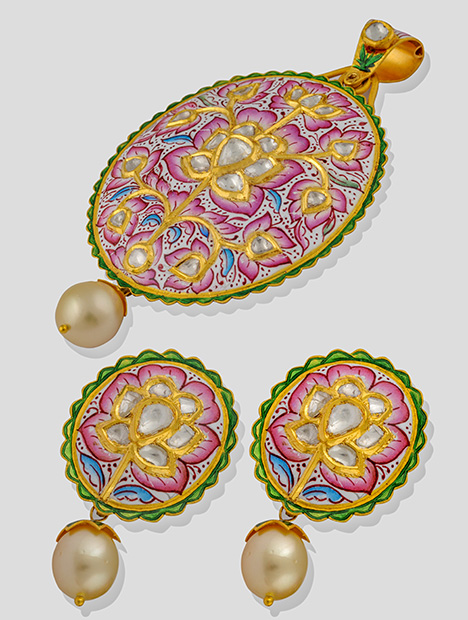
Jewellers.
Polki diamonds are flat uncut diamonds, or diamonds cut to look flat, set in the Kundan style with 24K gold foil. They are backed with a silver foil that acts as the diamond’s makeshift pavilion, giving it the appearance of depth and greater reflection. The silver foil diamond assemblage is secured into a 22K to 24K gold frame with a wax-like substance, and then the uncut diamond is secured with 24K gold foil around its edge.
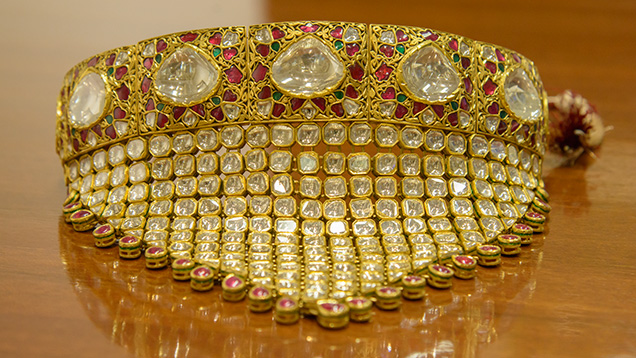
Our customers are the moguls of today.
In 2015 a GIA field team visited Jaipur to study its gem and jewelry industry, including traditional jewelers who still manufacture and sell the jewelry popular almost 300 years ago and a modern company that produces its own interpretation of traditional tribal jewelry. Through interviews and tours of their retail and manufacturing facilities, we learned the secrets of these jewelers and their customers, from the maharajas of Jaipur and British royalty to the super-wealthy of the Arab countries and stars of Hollywood and Bollywood.
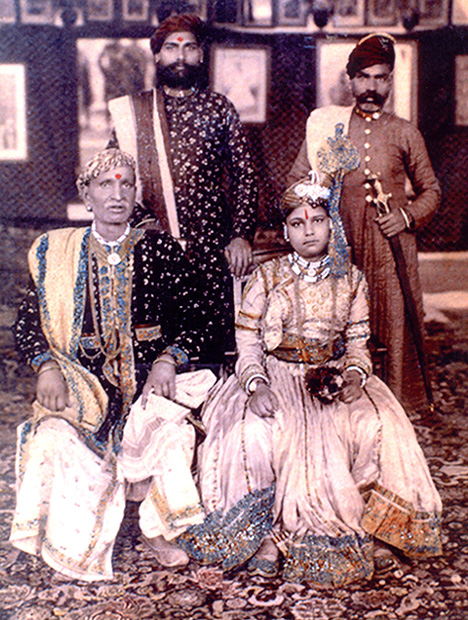
Photo courtesy Surana Jewellers.
SURANA JEWELLERS
Surana Jewellers started out as family jewelers to Jaipur’s maharajas in 1735, although their family of jewelers dates back even further. By 1951 they had formed a modern company. Before India’s independence in 1947, few jewelers were set up as structured businesses. Even at that time Surana Jewellers usually had only five customers a day, by appointment. These were serious, wealthy customers, however, commissioning remarkable jewelry and objets d’art. Today they average around 60 to 70 customers a day, still serious buyers.
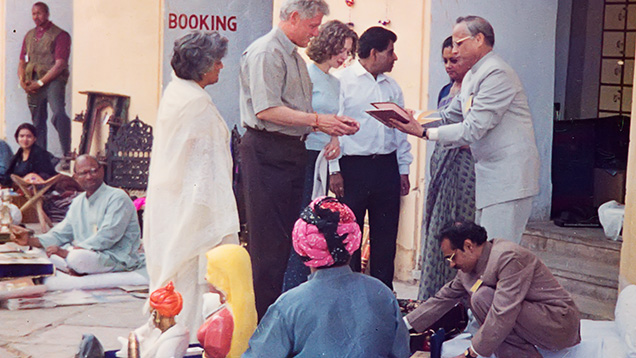
Surana continues to make Kundan meena jewelry with polki diamonds and other Kundan-set gemstones, using similar techniques as for the jewelry made for the maharajas. They typically use a jewelry frame of 23K gold. A wax-like substance is placed in the frame and heated to form the surfaces that will hold the silver backings and stones. The silver backings are indented to make a pavilion for the flat uncut diamonds or flat colored gemstones.
For colored gemstones the silver foil may be painted the same color as the stone so the reflection enhances the color. This setting style is considered the art of illusion. After the wax-like substance cools and hardens the gems and foil in place, 24K gold foil further secures the stones. Most pieces have the front and back completely finished, with enamel often also used for the back of the piece.
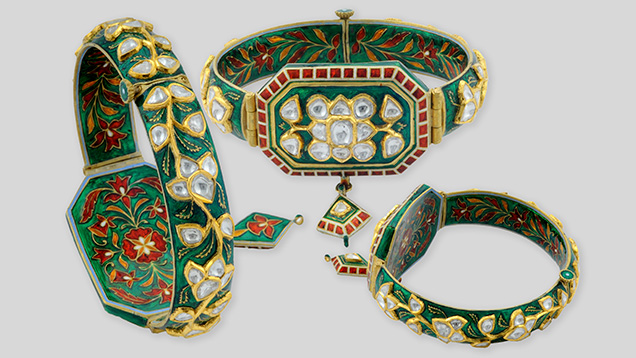
While Surana also creates more modern jewelry lines incorporating modern-cut diamonds, Kundan meena jewelry with polki diamonds remains in strong demand. They use over 100 kg of gold a year in manufacturing their jewelry, and a traditional Indian wedding may include Kundan meena jewelry weighing over a half kilogram of gold for the bride alone.
GEM PALACE
Visiting Gem Palace was like visiting a museum and a modern jewelry store at the same time. Jewelers to the maharajas since the early 1700s, Sanjay Kasliwal’s family has one of the richest traditions of any jeweler in Jaipur or indeed India. The shop was full of antique and newly produced Kundan meena jewelry with polki diamonds. We saw maharajah headdresses with large polki diamonds; a 24K gold and enamel chess set over 250 years old; a 24K gold and enamel drinking flask in the form of a parrot, also over 250 years old; and an infant’s enameled spoon and plate of solid gold and polki diamonds.
In the West you say, ‘born with a silver spoon.’ In India they were born with diamond spoons.
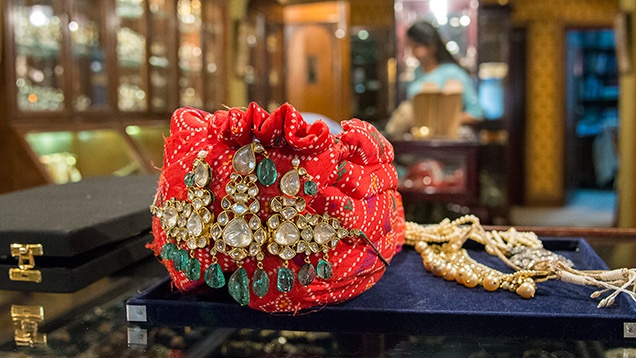
Since the time of the maharajas, Gem Palace’s clientele has expanded to include royalty such as President John Kennedy and First Lady Jackie Kennedy, Queen Elizabeth, Prince Charles, Lady Diana, the queen of Holland, the king and queen of Sweden, and the king and queen of Spain. Customers have also included celebrities like Errol Flynn, Richard Gere, Gwyneth Paltrow, and Oprah Winfrey, as well as business leaders like the Agnelli family, owner of Fiat and Chrysler. Some of the richest people in the world are customers, such as the emir of Qatar. Fifty percent of Gem Palace’s customers are Indian, and wedding jewelry is very important to the core business. Clients from Europe, the United States, the Middle East, and a growing new market in Central and South America also play an important role.
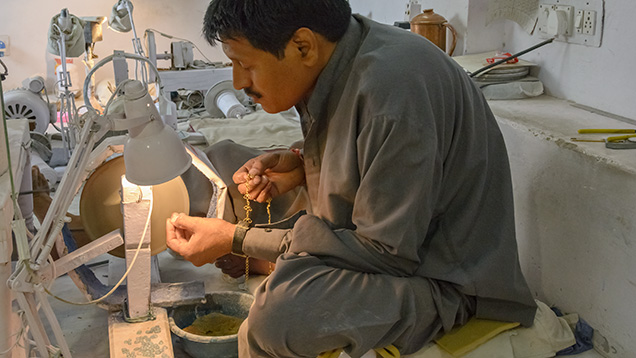
Along with the antique pieces, we saw the design and creation of magnificent pieces of Kundan meena jewelry with polki diamonds and other gemstones, completed in the same building as the current store, which was built in 1842. Craftsmen were cutting colored gemstones from rough; manufacturing the gold frames with traditional methods, including using blowpipes for soldering; enameling the jewelry on the front and back; and setting the stones.
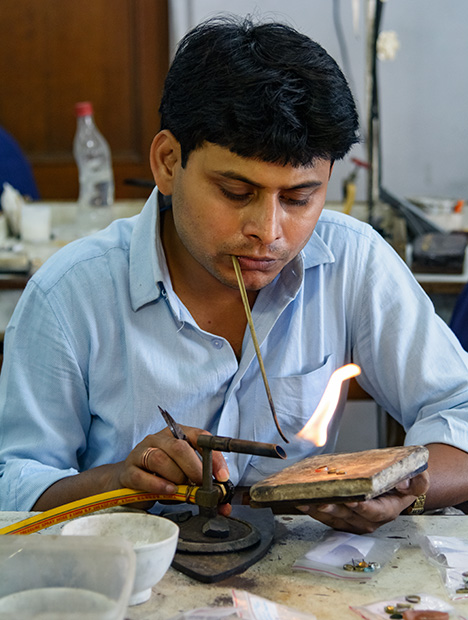
blowpipe for manufacturing. Photo by Andrew Lucas/GIA, courtesy Gem Palace.
Gem Palace always finishes the backs of their jewelry pieces with enameling and sometimes diamonds or other stones as well. The philosophy is that when the wearer holds a necklace up to put it on, she should see that the piece is as beautifully finished on the back as others see from the front.
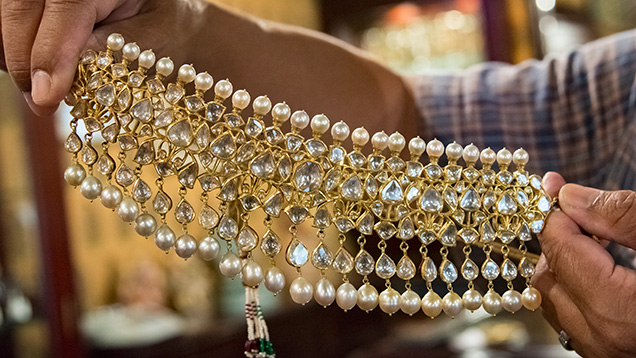
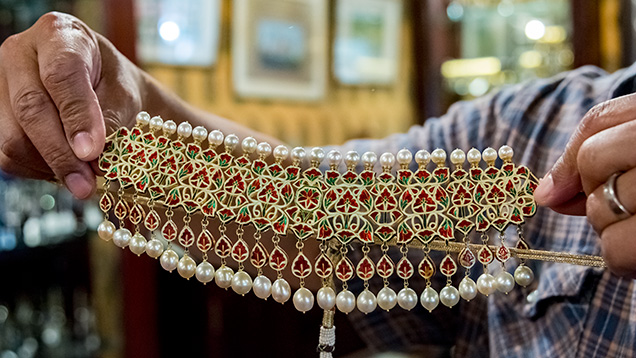
The owner of our jewelry should see the same beauty and quality on the back when she lifts up a necklace to put it on as all others do when seeing it worn.
Sanjay Kasliwal also blends jewelry styles, as in his Indo-Russian line, in which the back of the piece is finished with a Russian style of filigree and diamond setting, blending styles while maintaining jewelry that is completely finished on both front and back. These new styles can incorporate flat uncut diamonds, rose-cut diamonds, and modern full-cut diamonds. Gem Palace creates jewelry with price points from US$500 to US$10 million and beyond to try to have a piece of jewelry to suit everyone entering the store.
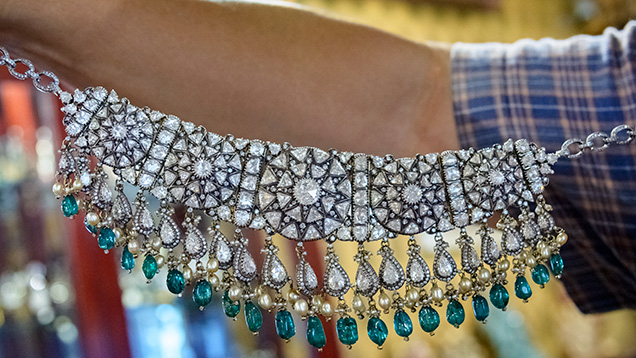
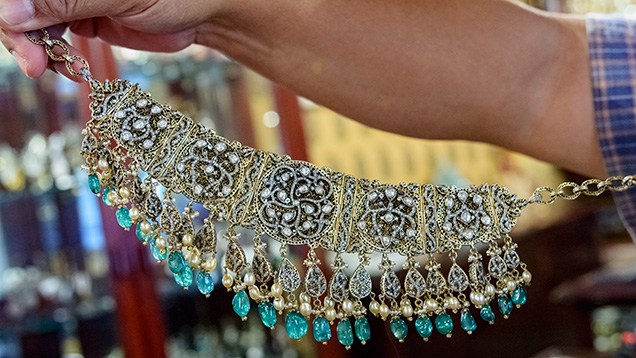
Everyone entering our store should leave with a piece of jewelry they will cherish.
AMRAPALI
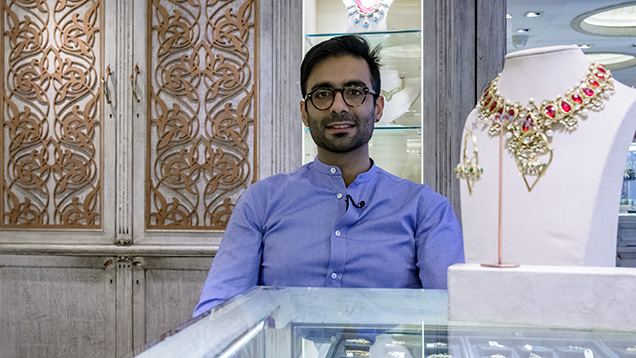
Amrapali is a great contrast to other jewelers active for generations. The company is a modern-day venture, founded in 1978 and known for its interpretations of traditional Indian jewelry, including tribal jewelry and Kundan meena jewelry. Amrapali was founded by two entreprenueral history students with just a few hundred rupies in their pocket and a tremendous passion for Indian culture and expressing that culture through jewelry. Driving to remote areas of the country, they purchased tribal jewelry and recreated it for their jewelry lines.
Our family business was started by two history students on ten dollars and tremendous passion.
Their jewelry transformed traditional Indian tribal jewelry into fashionable high-end jewelry for the Bollywood crowd, of which they have a strong following. These stars have made this type of jewelry an “in” look in the country as well as with foreigners. Today 60 to 70 percent of Amrapali’s business is the Indian domestic market.
When the company started, most of its manufacturing was done by the Jaipur cottage industry of craftsmen working out of their homes. Today its factories employ between 1,600 and 2,300 craftsmen, depending on the season, manufacturing their jewelry in-house.
Our jewelry ranges from seven U.S. dollars to whatever the customer wants to pay.
Amrapali’s jewelry includes plated base metal for their more fashionable affordable lines to silver jewelry to gold jewelry ranging from 18K to 24K. They have elaborate pieces of traditional Kundan meena jewelry, including pieces with polki diamonds and other colored stones. The Kundan meena jewelry is 22K to 24K and almost always enameled on the front and back. The average price of jewelry on their website, which is more fashion oriented, is $120 to $400 USD; their gold gifts start from $500 to $5,000; pieces for occasions like birthdays can be $10,000 to $15,000, and pieces for weddings are usually over $50,000 USD. They also produce very elaborate high-end pieces. Their jewelry lines range from tribal influenced to Kundan meena to modern lines with strong Western influence.
Chambala: Bud-shaped decorations based on the fragrant yellow flower of the champa tree, strung in a series on a long necklace. |
Andrew Lucas is manager of field gemology for education at GIA Carlsbad, Nirupa Bhatt is managing director for GIA India and Middle East, Manoj Singhania is director of education at GIA India, Kashish Sachdeva is a gemology instructor at GIA India, Tao Hsu is Technical Editor of Gems and Gemology, and Pedro Padua is video producer at GIA Carlsbad.
DISCLAIMER
GIA staff often visit mines, manufacturers, retailers and others in the gem and jewelry industry for research purposes and to gain insight into the marketplace. GIA appreciates the access and information provided during these visits. These visits and any resulting articles or publications should not be taken or used as an endorsement.
The authors gratefully thank Gem Palace, Surana Jewellers, and Amrapali.
